Role of mTOR-regulated autophagy in spine pruning defects and memory impairments induced by binge-like ethanol treatment in adolescent mice
- PMID: 32876364
- PMCID: PMC8018167
- DOI: 10.1111/bpa.12896
Role of mTOR-regulated autophagy in spine pruning defects and memory impairments induced by binge-like ethanol treatment in adolescent mice
Abstract
Adolescence is a brain maturation developmental period during which remodeling and changes in synaptic plasticity and neural connectivity take place in some brain regions. Different mechanism participates in adolescent brain maturation, including autophagy that plays a role in synaptic development and plasticity. Alcohol is a neurotoxic compound and its abuse in adolescence induces neuroinflammation, synaptic and myelin alterations, neural damage and behavioral impairments. Changes in synaptic plasticity and its regulation by mTOR have also been suggested to play a role in the behavioral dysfunction of binge ethanol drinking in adolescence. Therefore, by considering the critical role of mTOR in both autophagy and synaptic plasticity in the developing brain, the present study aims to evaluate whether binge ethanol treatment in adolescence would induce dysfunctions in synaptic plasticity and cognitive functions and if mTOR inhibition with rapamycin is capable of restoring both effects. Using C57BL/6 adolescent female and male mice (PND30) treated with ethanol (3 g/kg) on two consecutive days at 48-hour intervals over 2 weeks, we show that binge ethanol treatment alters the density and morphology of dendritic spines, effects that are associated with learning and memory impairments and changes in the levels of both transcription factor CREB phosphorylation and miRNAs. Rapamycin administration (3 mg/kg) prior to ethanol administration restores ethanol-induced changes in both plasticity and behavior dysfunctions in adolescent mice. These results support the critical role of mTOR/autophagy dysfunctions in the dendritic spines alterations and cognitive alterations induced by binge alcohol in adolescence.
Keywords: adolescence; autophagy; binge ethanol treatment; cognitive function; dendritic spines; mTOR; synaptic pruning.
© 2020 International Society of Neuropathology.
Conflict of interest statement
The authors have no conflicts of interest to declare.
Figures

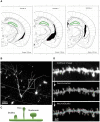
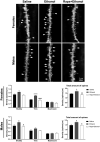
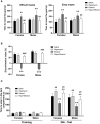
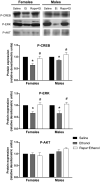
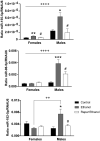
Similar articles
-
Binge-like ethanol treatment in adolescence impairs autophagy and hinders synaptic maturation: Role of TLR4.Neurosci Lett. 2018 Aug 24;682:85-91. doi: 10.1016/j.neulet.2018.05.049. Epub 2018 Jun 1. Neurosci Lett. 2018. PMID: 29864452
-
Binge ethanol exposure induces endoplasmic reticulum stress in the brain of adult mice.Toxicol Appl Pharmacol. 2018 Oct 1;356:172-181. doi: 10.1016/j.taap.2018.08.006. Epub 2018 Aug 13. Toxicol Appl Pharmacol. 2018. PMID: 30114398 Free PMC article.
-
Involvement of TLR4 in the long-term epigenetic changes, rewarding and anxiety effects induced by intermittent ethanol treatment in adolescence.Brain Behav Immun. 2016 Mar;53:159-171. doi: 10.1016/j.bbi.2015.12.006. Epub 2015 Dec 10. Brain Behav Immun. 2016. PMID: 26686767
-
Role of the innate immune system in the neuropathological consequences induced by adolescent binge drinking.J Neurosci Res. 2018 May;96(5):765-780. doi: 10.1002/jnr.24203. Epub 2017 Dec 7. J Neurosci Res. 2018. PMID: 29214654 Review.
-
mTOR-Related Brain Dysfunctions in Neuropsychiatric Disorders.Int J Mol Sci. 2018 Jul 30;19(8):2226. doi: 10.3390/ijms19082226. Int J Mol Sci. 2018. PMID: 30061532 Free PMC article. Review.
Cited by
-
Adolescent social housing protects against adult emotional and cognitive deficits and alters the PFC and NAc transcriptome in male and female C57BL/6J mice.Front Neurosci. 2023 Dec 7;17:1287584. doi: 10.3389/fnins.2023.1287584. eCollection 2023. Front Neurosci. 2023. PMID: 38130694 Free PMC article.
-
Cognitive Alterations in Addictive Disorders: A Translational Approach.Biomedicines. 2023 Jun 23;11(7):1796. doi: 10.3390/biomedicines11071796. Biomedicines. 2023. PMID: 37509436 Free PMC article. Review.
-
Voluntary alcohol binge-drinking in adolescent C57Bl6 mice induces delayed appearance of behavioural defects in both males and females.Addict Biol. 2022 Jan;27(1):e13102. doi: 10.1111/adb.13102. Epub 2021 Oct 5. Addict Biol. 2022. PMID: 34611982 Free PMC article.
-
Amelioration of Chronic Ethanol Administration-Induced Learning and Memory Impairments by High-Intensity Interval Training (HIIT) and Ritalin.Brain Behav. 2025 May;15(5):e70539. doi: 10.1002/brb3.70539. Brain Behav. 2025. PMID: 40341875 Free PMC article.
-
Adolescent binge ethanol impacts H3K36me3 regulation of synaptic genes.Front Mol Neurosci. 2023 Mar 3;16:1082104. doi: 10.3389/fnmol.2023.1082104. eCollection 2023. Front Mol Neurosci. 2023. PMID: 36937047 Free PMC article.
References
-
- Adriani W, Macrì S, Pacifici R, Laviola G (2002) Peculiar vulnerability to nicotine oral self‐administration in mice during early adolescence. Neuropsychopharmacology 27:212–224. - PubMed
-
- Altman J, Bayer SA (1990) Migration and distribution of two populations of hippocampal granule cell precursors during the perinatal and postnatal periods. J Comp Neurol 301:365–381. - PubMed
Publication types
MeSH terms
Substances
Grants and funding
- RD/16/0017/0007/The Institute Carlos III and FEDER funds (RTA-Network)
- RD16/0017/0004/The Institute Carlos III and FEDER funds (RTA-Network)
- 2018-I003/The Spanish Ministry of Health, Consumption and Social Welfare-PNSD
- 2019-I039/The Spanish Ministry of Health, Consumption and Social Welfare-PNSD
- FEDER Funds
LinkOut - more resources
Full Text Sources
Miscellaneous

